Richard Horne
Talking a Torrent
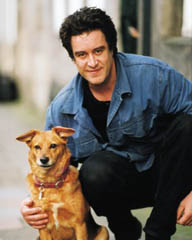 Harry has seventy journals filled with sketches and notes. He thinks visually and these sketches are his shorthand; he goes back to them time and again, doodling with words and images on the page until the ideas fill out into a story. He often makes journal entries over his first cup of coffee, while dreams are still fresh in his mind. In the evening, watching the flames of an open fire, he and Mandy talk through ideas together and let them take flight.
Harry has seventy journals filled with sketches and notes. He thinks visually and these sketches are his shorthand; he goes back to them time and again, doodling with words and images on the page until the ideas fill out into a story. He often makes journal entries over his first cup of coffee, while dreams are still fresh in his mind. In the evening, watching the flames of an open fire, he and Mandy talk through ideas together and let them take flight.
Harry’s characters are often based on friends and family. Poet Alan Jackson is Jackson in The Last Polar Bears.
‘I’ve known Alan for over twenty years now,’ Harry told me. ‘One day I looked out of my studio window – I was in Edinburgh at the time – and there was a man sitting on a bench, watching me. I thought no more about it. About ten minutes later, the buzzer went and I asked, ‘Who is it?’ and a voice said ‘Open up and find out!’ He came in and we talked for the rest of the day. It was if I’d known him all my life. We’ve been friends ever since. In his writing Alan takes a walk through apocalypse, but he’s also very humorous. His poetry has been a touchstone for me.’ 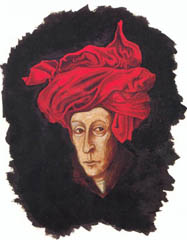
As a child Harry was fascinated by ‘Iron Boots’, an eighteenth-century cartoon that hung in his family home, and can see that its gothic pen and ink style has influenced his work.
‘If I’m doing caricatures as opposed to cartoons I prefer to draw the face from memory. That means looking at photographs of the subject, putting them away, and then instantly setting about drawing. If it’s a musician, say Kurt Cobain, I would play Nirvana while doing the picture. When it comes to political cartoons, I listen to Wagner. My number one influence in political cartoons is Gillray. Rowlandson, Cruikshank and Gillray are often cited as the fathers of the political cartoon, but for me Gillray has the edge. His cartoons were produced as etchings and the shop where they were sold in London was crowded every Monday morning in anticipation of his latest piece. Even though they are obscure now, the drawing skill is there to be appreciated. It’s fantastic.’ 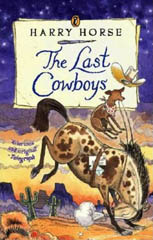
Returning to childhood influences, we discussed the books and illustrators he enjoyed. Peake, Sendak, Rackham, Dulac, Beardsley and Quentin Blake are still among his favourite illustrators. He has kept the treasured original copies of many of his favourite childhood books.
‘Writer-illustrator ‘BB’ was one of my first influences. His The Little Grey Men is a classic. And then, I love the mix of fantasy and satire in The Crock of Gold by James Stephens. There was Farrar’s Eric, or, Little by Little…morbid, but wonderful. Russell Hoban’s The Mouse and His Child…he’s such a great storyteller. I was always keen on fantasy…The Sword in the Stone by T.H.White, Ursula Le Guin’s Wizard of Earthsea, The Horse and his Boy by C.S.Lewis. And when I was a teenager, I practically lived my life through Mervyn Peake’s Gormenghast and Salinger’s Catcher in the Rye. I sometimes reread these books, they’re fresh as ever to me.
Illustrations from Harry Horse’s Journal
The Discovery of the Unsinkable
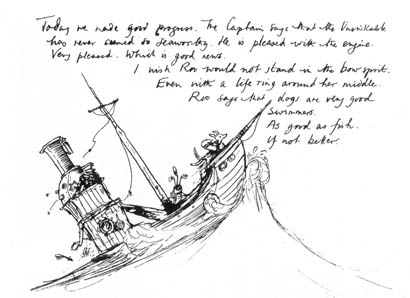 ‘The idea of an old wrecked boats is haunting. When I was a child my father’s fishing boat the Ormond broke its moorings and was wrecked in a storm. I must have been about ten when this happened. I can remember the moment when I first saw it, run aground up Bat Creek in Devon. I was terribly sad. Boats have personalities. The Unsinkable is based on the Ormond.’
‘The idea of an old wrecked boats is haunting. When I was a child my father’s fishing boat the Ormond broke its moorings and was wrecked in a storm. I must have been about ten when this happened. I can remember the moment when I first saw it, run aground up Bat Creek in Devon. I was terribly sad. Boats have personalities. The Unsinkable is based on the Ormond.’
Rabbit and Roo
‘The working title for the picture-book I’m doing at the moment is Little Rabbit Lost. It’s about a rabbit celebrating his fourth birthday who gets lost in a theme park called Rabbit World. I’m also writing another book about Roo, called The Last Castaways. I love the feeling when text and illustrations are integrated in an exciting way. My father read me Winnie the Pooh when I was small, and E.H. Shepard’s black and white illustrations are ingrained in my imagination. My first drawings, when I was about three, were mostly of ducks. My mum would take me to a pond and give me crayons and paper. I always drew the mallards. The iridescent sheen of their heads reminds me of starlings, my favourite bird. I have always loved rabbits, partly because Beatrix Potter was a big part of my childhood. She could be quite frightening. Now I often choose animal characters to play out particular emotions.’ 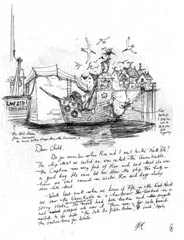
Roo on the prowl. Sketch for The Last Castaway
‘I’ve always had a dog. I could measure my life out in dogs. My relationship with Roo began when Mandy and I got married. We found her in a home for lost dogs and fell in love with her. Essentially my work is a three way collaboration between me, Mandy and Roo. Mandy comes from Burra in Shetland. She has an amazing way of seeing the world which feeds my own imagination.
The basis for an illustration for The Last Castaways
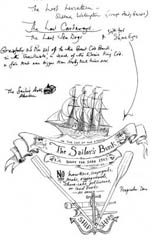 ‘I sketch in ink using an old dip pen. This gives a better line than any modern rotring pen. I use black ink with a shellac base and sometimes sepia ink. Paper is really important. I use a hot press 140 lb watercolour paper. The texture is very smooth, the pen nibs glide over it. Using a pen and ink for the final image is a little like playing Russian roulette – the pen nib can break, it might blot. That hasn’t happened for a long time, but I hold my breath when I apply ink.
‘I sketch in ink using an old dip pen. This gives a better line than any modern rotring pen. I use black ink with a shellac base and sometimes sepia ink. Paper is really important. I use a hot press 140 lb watercolour paper. The texture is very smooth, the pen nibs glide over it. Using a pen and ink for the final image is a little like playing Russian roulette – the pen nib can break, it might blot. That hasn’t happened for a long time, but I hold my breath when I apply ink.
Uncle Vincent
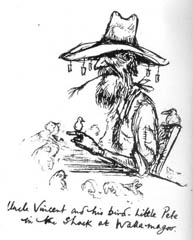 ‘This picture is of my ‘Uncle Vincent; who ran away in the 1890s to the Warranga Gold Fields in Australia. He went to the station at Whroo, a lonely lagoon at Warranga park, where he searched for gold. Uncle Vincent’s adventure inspired The Last Gold Diggers. The true story of Uncle Vincent’s adventure is stranger than fiction. He actually discovered a huge nugget of gold and decided to bring his fortune back to his estranged family in Yorkshire. On the voyage home he met and married a young woman, ate an oyster and died of food poisoning. Vincent’s brother was my grandfather.’
‘This picture is of my ‘Uncle Vincent; who ran away in the 1890s to the Warranga Gold Fields in Australia. He went to the station at Whroo, a lonely lagoon at Warranga park, where he searched for gold. Uncle Vincent’s adventure inspired The Last Gold Diggers. The true story of Uncle Vincent’s adventure is stranger than fiction. He actually discovered a huge nugget of gold and decided to bring his fortune back to his estranged family in Yorkshire. On the voyage home he met and married a young woman, ate an oyster and died of food poisoning. Vincent’s brother was my grandfather.’
© Jennie Renton, 2001
Harry and Mandy died in early January, 2007.

Comments